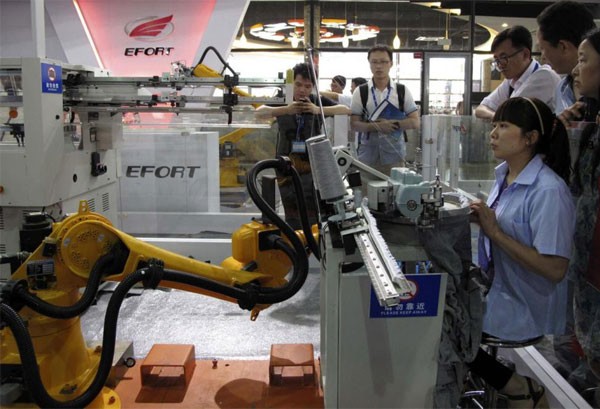In the lead-up to the 2014 World Robotics and Intelligent Equipment Industry Conference & Exhibition in the second half of December, the executive chairman of the International Robotics and Intelligent Equipment Industry Alliance, Luo Jun, spoke at a press conference on Dec. 19, Friday.
The key piece of information for reporters was the statistics that domestic firms are responsible for only 20 percent of market share in a sector that is dominated by overseas manufacturers.
The announcement arrives after Beijing signed off on a five-year economic plan just after the turn of the decade that identified robotics as a development priority in the 2011-2015 period. The Chinese government sought to create a primary group of robotics companies within its borders that would fulfill a yearly production target of around 13,000 robots.
Beijing officials were influenced by the economic data that emerged after 2009, which indicated that productivity levels had shifted into the negative--the promotion of an automation policy involving robotics was seen as an efficiency booster. The government also received the backing of Chinese manufacturers, who liked the idea of robotics alleviating their labor-cost woes.
However, it would be a mistake to perceive China's relationship with the robotics industry and market as flailing due to Luo's statement on Monday. In 2013, China was the number one global buyer of robots, while in late October, 420 robot companies were registered in China. Also, over 30 industrial parks devoted to robotics were functioning, or were in the process of being constructed.
Luo explained that, even though China's robotics status is still impressive in a world context, the overhead costs hamper the domestic industry. But he mentioned that further government policies will be introduced in 2015 to prepare China for positive market growth, which the Alliance hopes will occur over the next three decades.



























